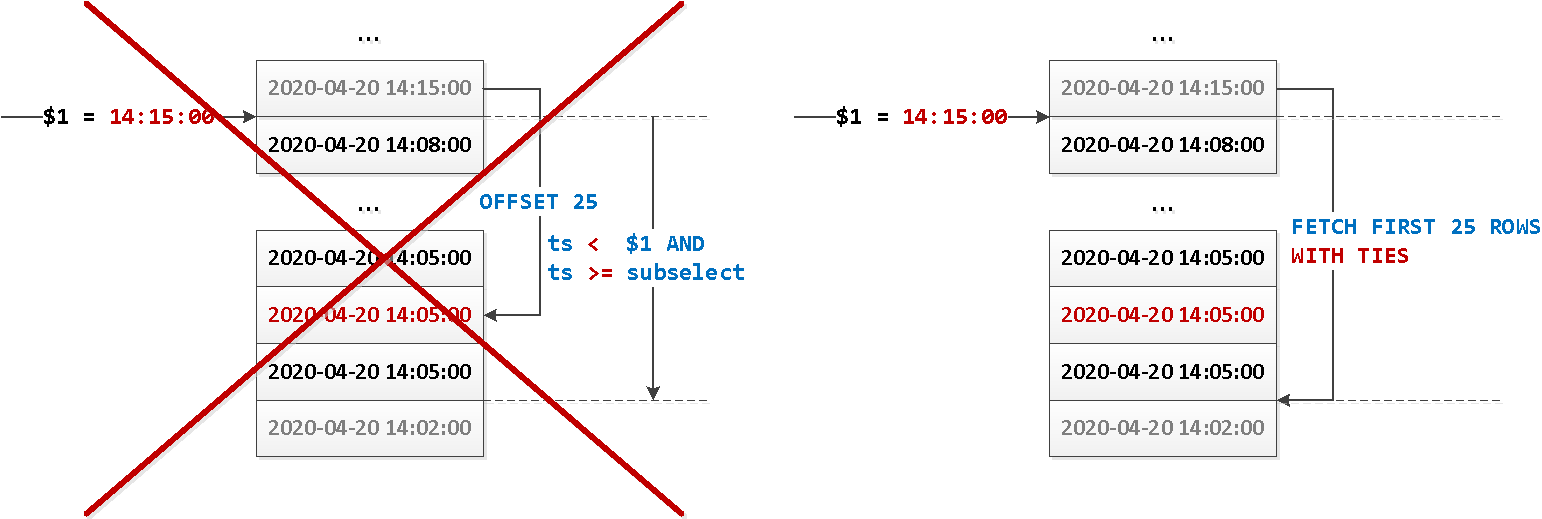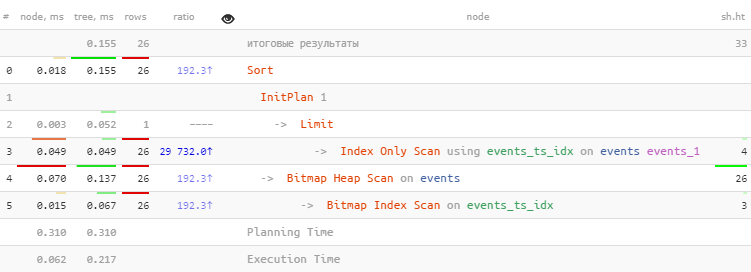WITH TIESfrom the SQL: 2008 standard implemented in the upcoming version of PostgreSQL 13 :
OFFSET start { ROW | ROWS }
FETCH { FIRST | NEXT } [ count ] { ROW | ROWS } { ONLY | WITH TIES }
Let me remind you that in that article we stopped at the point that if we have a sign like this:
CREATE TABLE events(
id
serial
PRIMARY KEY
, ts
timestamp
, data
json
);
INSERT INTO events(ts)
SELECT
now() - ((random() * 1e8) || ' sec')::interval
FROM
generate_series(1, 1e6);... then to organize chronological paging by it (by
ts DESC) it is most effective to use the following index:
CREATE INDEX ON events(ts DESC);... and this query model:
SELECT
...
WHERE
ts < $1 AND
ts >= coalesce((
SELECT
ts
FROM
events
WHERE
ts < $1
ORDER BY
ts DESC
LIMIT 1 OFFSET 25
), '-infinity')
ORDER BY
ts DESC;Good old subquery
Let's look at the plan for such a query, if we want to get the next segment from the beginning of this year:
EXPLAIN (ANALYZE, BUFFERS)
SELECT
*
FROM
events
WHERE
ts < '2020-01-01'::timestamp AND
ts >= coalesce((
SELECT
ts
FROM
events
WHERE
ts < '2020-01-01'::timestamp
ORDER BY
ts DESC
LIMIT 1 OFFSET 25
), '-infinity')
ORDER BY
ts DESC;
[look at explain.tensor.ru]
Why is there a nested query here? Exactly so as not to have the problems described in that article with "jumping" the same values of the sort key between the requested segments:

Trying WITH TIES "to the teeth"
But this is exactly what the functionality
WITH TIESis for - to select all records with the same value of the boundary key at once !
EXPLAIN (ANALYZE, BUFFERS)
SELECT
*
FROM
events
WHERE
ts < '2020-01-01'::timestamp
ORDER BY
ts DESC
FETCH FIRST 26 ROWS WITH TIES;
[look at explain.tensor.ru] The
query looks much simpler, almost 2 times faster, and in just one
Index Scan- an excellent result!
Please note that even though we "ordered" only 26 records, I
Index Scanextracted one more - just to make sure that the "next" one no longer suits us.

Well, we are waiting for the official release of PostgreSQL 13, which is scheduled for tomorrow.